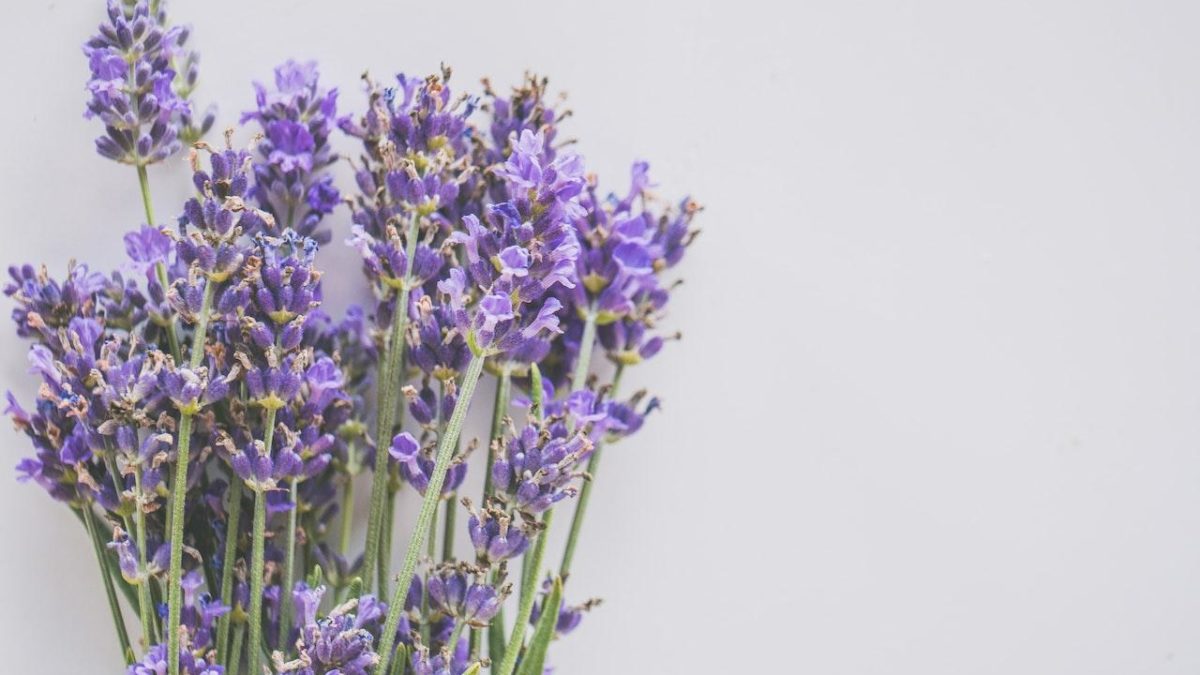Lavender is a beautiful and fragrant herb that can add a touch of elegance to any garden. But did you know that lavender is also a very delicate plant? If you want your lavender to thrive, you need to take extra care when watering and fertilizing it. In this blog post, we’ll show you all the best ways to care for your lavender plants.
“The best way to care for your lavender plants is to deadhead them regularly.”
Lavender plants are very easy to care for, which makes them a great choice for beginner gardeners or those with limited space. When growing lavender in pots, there are a few things you need to keep in mind to ensure your plants stay healthy and thrive.
The Best Way To Care For Your Lavender Plants
Lavender is often grown outdoors but can also be successfully grown indoors in pots. Caring for lavender plants in pots is not difficult, but there are a few things to do to ensure the success of your plants.
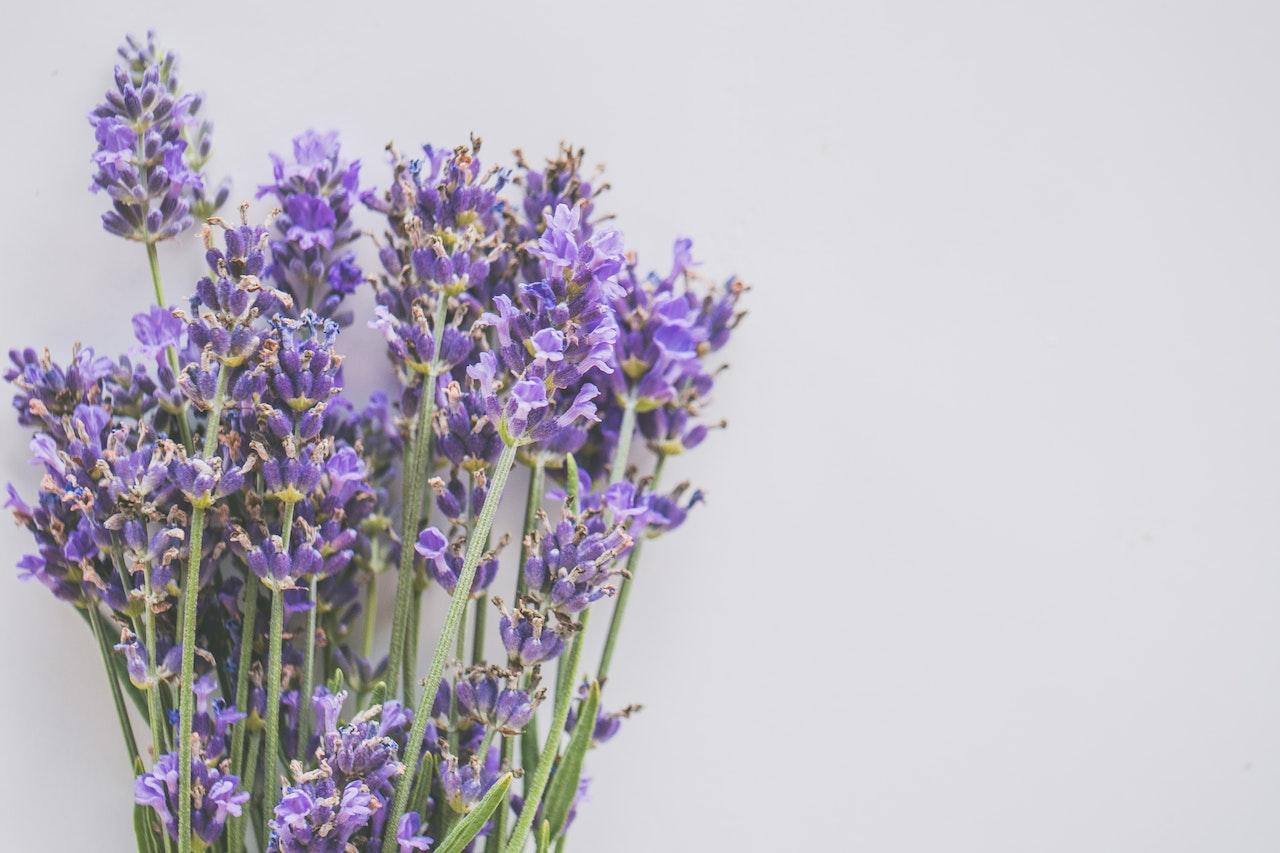
Credit: Pexels
Here are the few things you need to consider when caring for your lavender plants:
1. Size Of The Pot
Choose a pot that is large enough to accommodate the roots of your plant. A smaller pot will restrict the plant’s growth and may cause the roots to become overcrowded and unhealthy.
2. Drainage Of The Pot
The pot should also have drainage holes to allow excess water to escape. Lavender does not like to sit in wet soil, so good drainage is essential.
3. Potting Mix
When potting your lavender plant, use a light, well-drained potting mix. You can make your own mix by combining equal parts of sand, peat moss, and perlite.
4. Light
Once your plant is potted, place it in a sunny location. Lavender needs full sunlight to thrive, so a spot near a south-facing window is ideal. If you cannot provide full sunlight, you can supplement them with artificial light using grow lights.
5. Water
Water your lavender plant regularly, and allow the soil to dry out somewhat between waterings. Overwatering is a common cause of problems with indoor lavender plants, so be sure not to keep the soil too moist.
6. Fertilizer
In addition to regular watering, your lavender plant will also need a monthly feeding of balanced fertilizer. Apply the fertilizer according to the package directions and also water it well.
With proper care, your indoor lavender plant will thrive and provide you with beautiful blooms and lovely fragrances for many years.
How To Choose The Right Lavender Plant For Your Home
There are many different types of lavender plants, and choosing the right one for your home can seem like a daunting task. However, it is quite simple.
Here are some tips for you to choose the right lavender plant.
1. Type Of Lavender
Firstly, decide what type of lavender you want.
- English lavender is the most popular type and is perfect for use in lavender sachets, potpourris, and dried arrangements.
- French lavender is another popular type, and it is known for its sweet, floral scent.
- Spanish lavender is less common but has a strong, camphor-like scent.
2. Variety Of Lavender
Once you have decided on the type of lavender you want, the next step is to choose the right variety.
- English lavender comes in many different varieties, such as Hidcote, Munstead, and Lavender Lady.
- French lavender is also available in different varieties, such as Provence and Grosso.
- Spanish lavender is generally only available in one variety, but there are many different cultivars.
3. Size Of Pot
Once you have chosen the type and variety of lavender you want, the next step is to choose the right size pot. Choose a pot that is at least 12 inches wide. If you are growing lavender indoors, you will want to choose a smaller plant. If you are growing lavender outdoors, you can choose a larger plant.
4. Location Of The Plant
Finally, you need to choose the right location for your lavender plant. Lavender prefers full sunlight and well-drained soil. If you live in a cold climate, then choose the right spot to protect the plant from the wind.
Now that you know how to choose the right lavender plant for your home, you need to choose the right potting mix for your lavender plant.
The Best Potting Soil For Lavender Plants
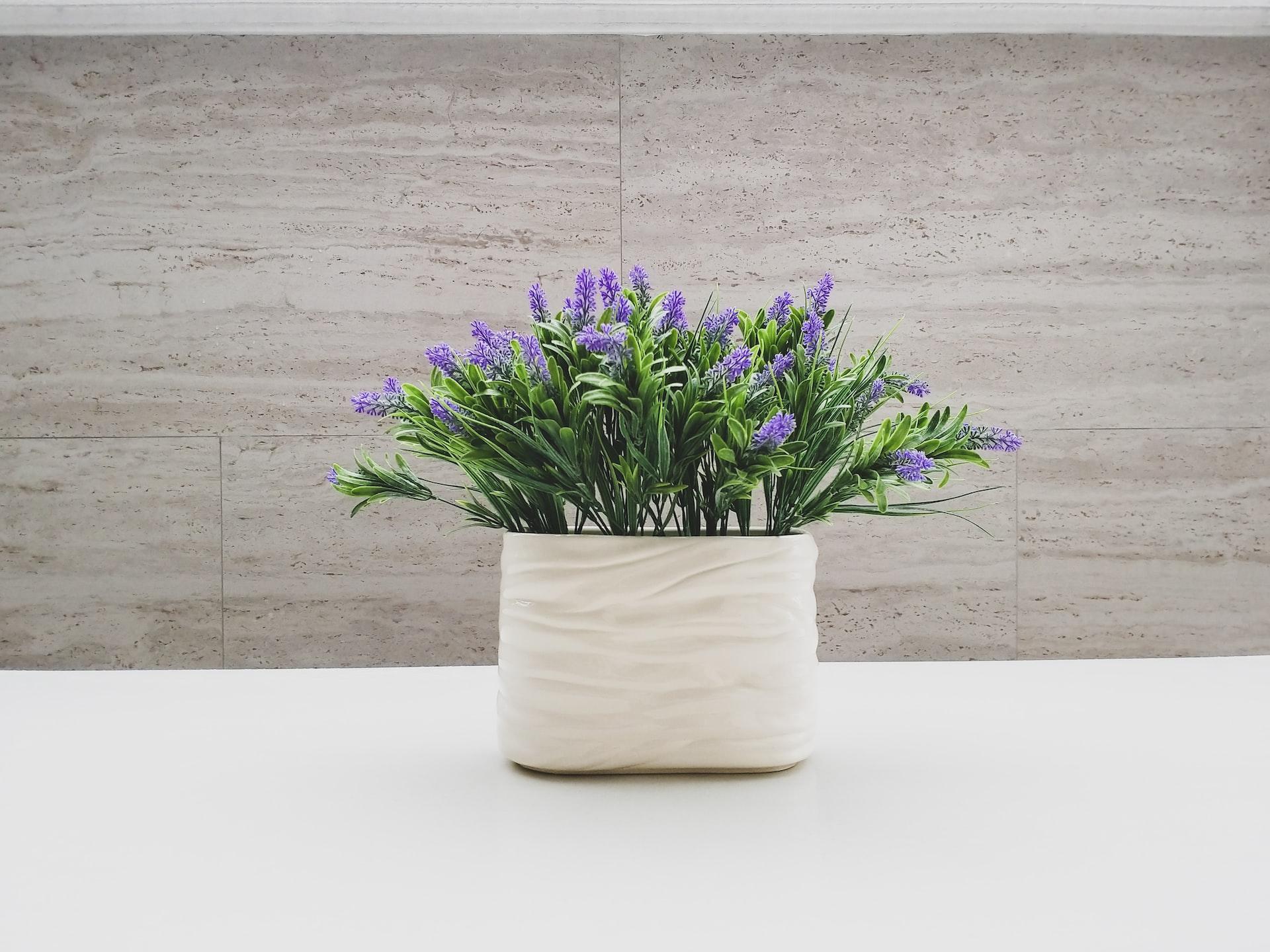
Credit: Unsplash
When it comes to potting soil, there are a few things to keep in mind for your lavender plants.
- The soil should be well-draining. Lavender plants do not like to sit in wet soil, so a potting mix that drains well is essential.
- The soil mix should be light and airy. A heavier potting mix can compact around the plant’s roots and cause problems.
- Finally, the soil mix should be slightly acidic. A pH of 6.5 to 7.0 is ideal for lavender.
Different Types Of Potting Mix
There are a few different types of potting mixes that can work well for lavender plants.
- One is a mix that is specifically designed for cacti and succulents. This type of mix is usually well-draining and light.
- Another option is a perlite and vermiculite mix. This type of mix is also well-draining and light, but it also has a slightly acidic pH.
Either of these types of mixes would be a great option for lavender plants.
When potting your lavender plant, make sure to use a pot that has drainage holes. It will help to ensure that the plant does not sit in wet soil. It is also a good idea to add a layer of gravel to the bottom of the pot before adding the potting mix. This will help with drainage.
How To Water Your Lavender Plant
Assuming that you have already planted your lavender in well-drained soil, the next step is to water it regularly.
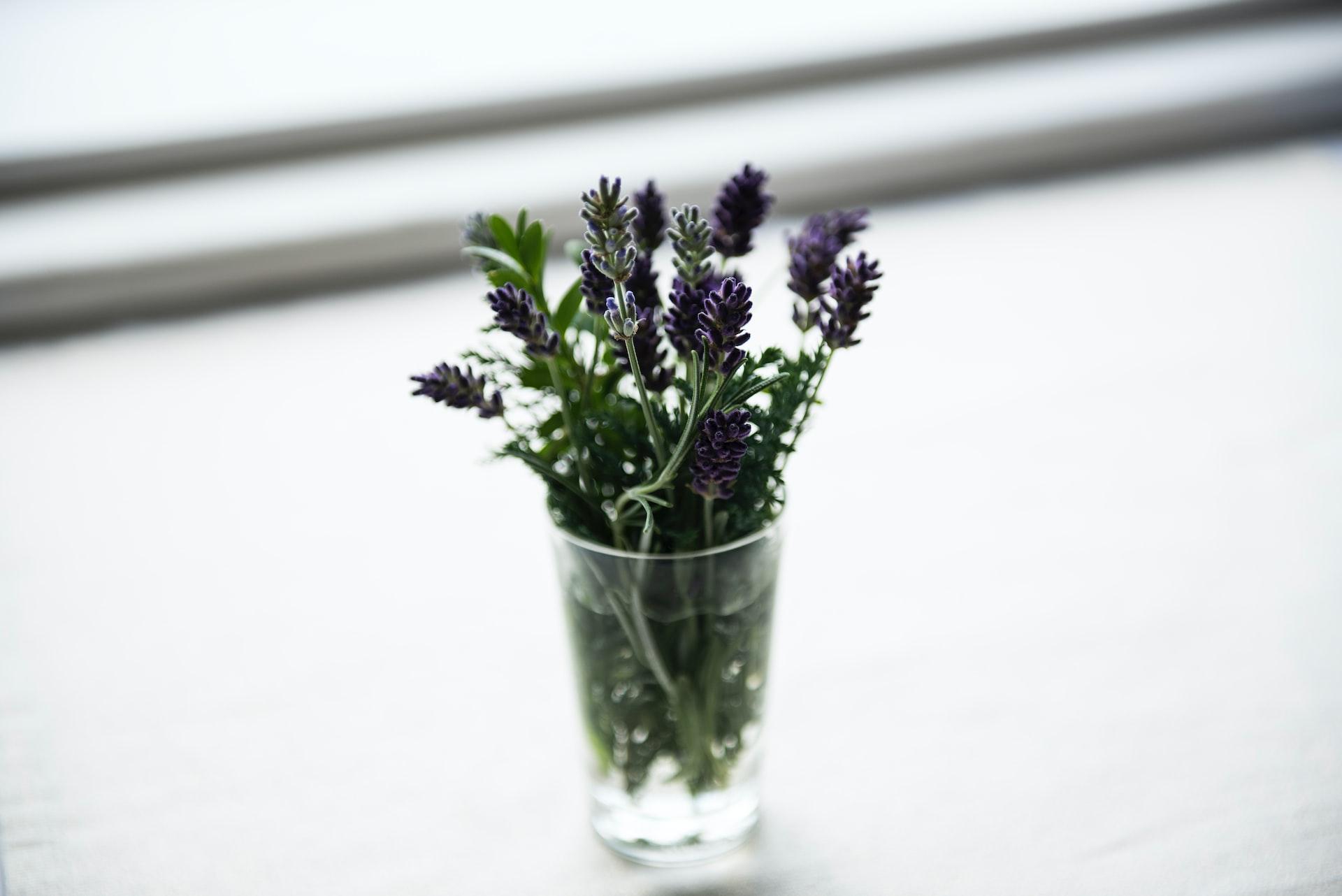
Credit: Unsplash
Lavender plants need to be kept moist, but not wet. The best way to water your lavender plant is to use a soaker hose or drip irrigation.
If you water your lavender plant with a sprinkler, water early in the day so the leaves have time to dry before nightfall. It will help to prevent the leaves from getting rot or mildew.
When watering your lavender plant, always check the soil before watering. The soil should be dry to the touch before you water it again. If the soil is too wet, the plant’s roots may rot.
If you live in an area with hot, dry summers, you may need to water your lavender plant more often. In these areas, it’s best to plant your lavender in a location that gets some afternoon shade.
Here are some general tips for watering your lavender plant:
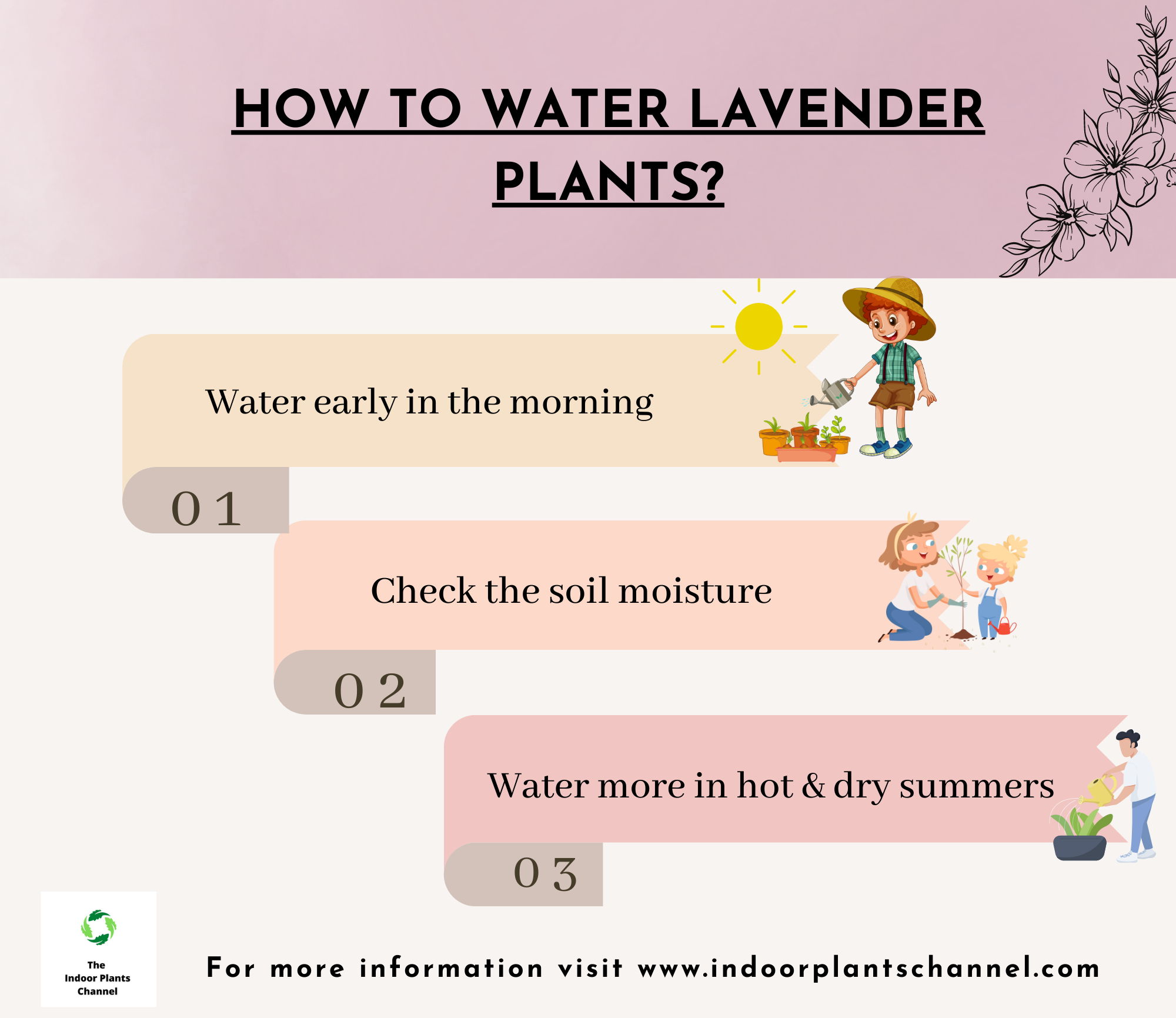
- Water early in the day, so the leaves have time to dry before nightfall.
- Check the soil before watering. The soil should be dry to the touch before you water it again.
- If you live in an area with hot, dry summers, you may need to water your lavender plant more often.
- In hot, dry areas, it’s best to plant your lavender in a location that gets some afternoon shade.
How To Fertilize Your Lavender Plant
Lavender is a beautiful, fragrant plant that’s perfect for any garden. But like all plants, it needs the right nutrients to thrive. That’s where fertilizing comes in.
Fertilizing your lavender plant is important for two reasons: first, it provides all the essential nutrients it needs to grow; and second, it encourages blooming. Here are some general tips for fertilizing your lavender plant.
- Lavender is a relatively light feeder, so you don’t need to use a lot of fertilizer. A light application of a well-balanced fertilizer once a month is all they need.
- When applying fertilizer, be sure to follow the instructions on the package.
- Too much fertilizer can damage your plant.
- Apply the fertilizer around the base of the plant, taking care not to get any on the leaves.
- Water the plant well after fertilizing to help the nutrients reach the roots.
With a little care, your lavender plant will be healthy and blooming in no time!
How To Prune Your Lavender Plant
Lavender plants need pruning to stay healthy and produce lots of flowers. You should prune your lavender plant in early spring before it starts to grow new leaves.
To prune your lavender plant, start by cutting off any dead or dying branches. Then, cut about one-third of the remaining branches. Your cuts should be at a 45-degree angle so that new growth will have plenty of room to grow.
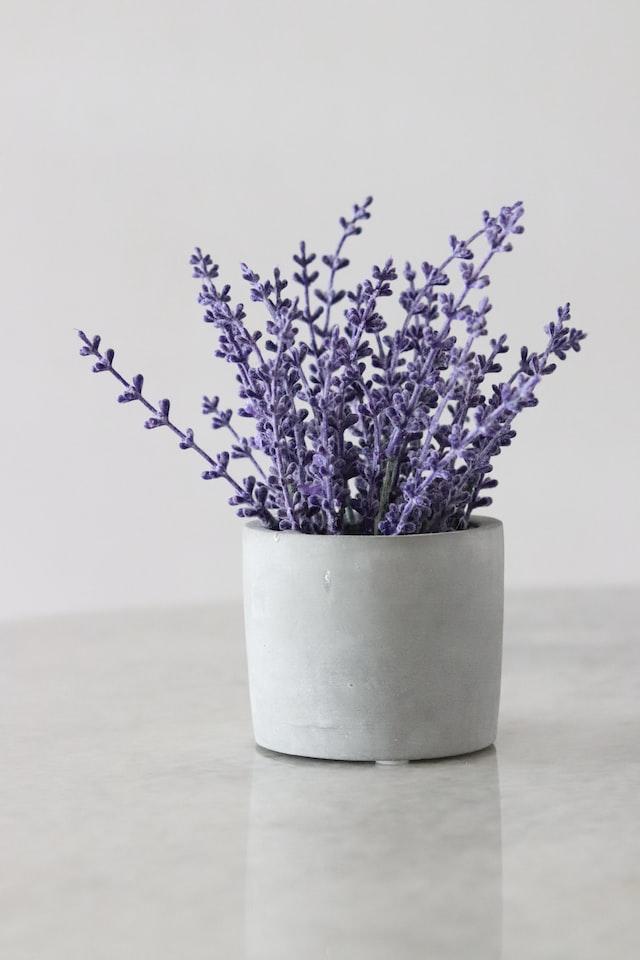
Credit: Unsplash
After you have pruned your lavender plant, it is important to fertilize it. It will help the plant recover from the pruning and produce new growth. You can use any type of fertilizer, but make sure to follow the instructions on the package.
Now that you know how to prune your lavender plant, it is a great time to get started! Be sure to prune it early in the spring so that it has plenty of time to grow new leaves and flowers.
The Best Location For Your Lavender Plant
Lavender plants are drought tolerant and can tolerate a wide range of soil types, and they can be planted in the ground or in containers.
When planting in the ground, choose a location that receives full sun and has well-drained soil. Lavender does not like wet feet, so make sure the location you choose does not stay wet or soggy after rain. You can improve drainage in your planting area by mixing in some sand or gravel.
If you live in an area with hot summers, choose a location that will offer some afternoon shade. This will help protect your lavender plants from the hot afternoon sun and prevent them from getting too much heat.
Lavender plants can be susceptible to root rot, so it is important to choose a location and potting mix that will help promote good drainage. By following these tips, you can ensure that your lavender plants will thrive in their new home.
What To Do If Your Lavender Plant Starts To Die?
1. Check The Soil Moisture
If your lavender plant starts to die, the first thing you should do is check the soil. Make sure that the soil is not too dry or too wet. If the soil is too dry, water the plant. If the soil is too wet, let the plant drain and dry out for a few hours before watering again.
2. Check the Location Of The Plant
Check the amount of sunlight the plant is getting. Lavender plants need at least six hours of sunlight a day. If the plant is not getting enough sunlight, move it to a sunnier location.
3. Check for Pests
Finally, check for pests. Aphids, spider mites, and whiteflies are all common pests that can harm lavender plants. If you see any of these pests, remove them from the plant and treat the plant with an organic pesticide.
How To Make Your Own Lavender Potpourri
What you will need:
- 1 cup of dried lavender
- 1/2 cup of dried roses
- 1/2 cup of dried chamomile
- 1/4 cup of dried lemon balm
- 1/4 cup of dried mint
- 1/4 cup of dried thyme
- 1 tablespoon of whole cloves
- 1 tablespoon of allspice berries
- 1 tablespoon of nutmeg
- 1 tablespoon of dried orange peel
- 1 tablespoon of dried lemon peel
Instructions:
- Combine all the ingredients in a large bowl and mix them well.
- Transfer the mixture to a glass jar or container with a lid.
- Store the potpourri in a cool, dry place.
- To use, simply place a handful of the mixture in a small sachet or bag. You can also add a few drops of essential oil to the potpourri for a more potent scent.
How To Use Lavender Oil
Lavender oil is a versatile oil that can be used in many different ways.
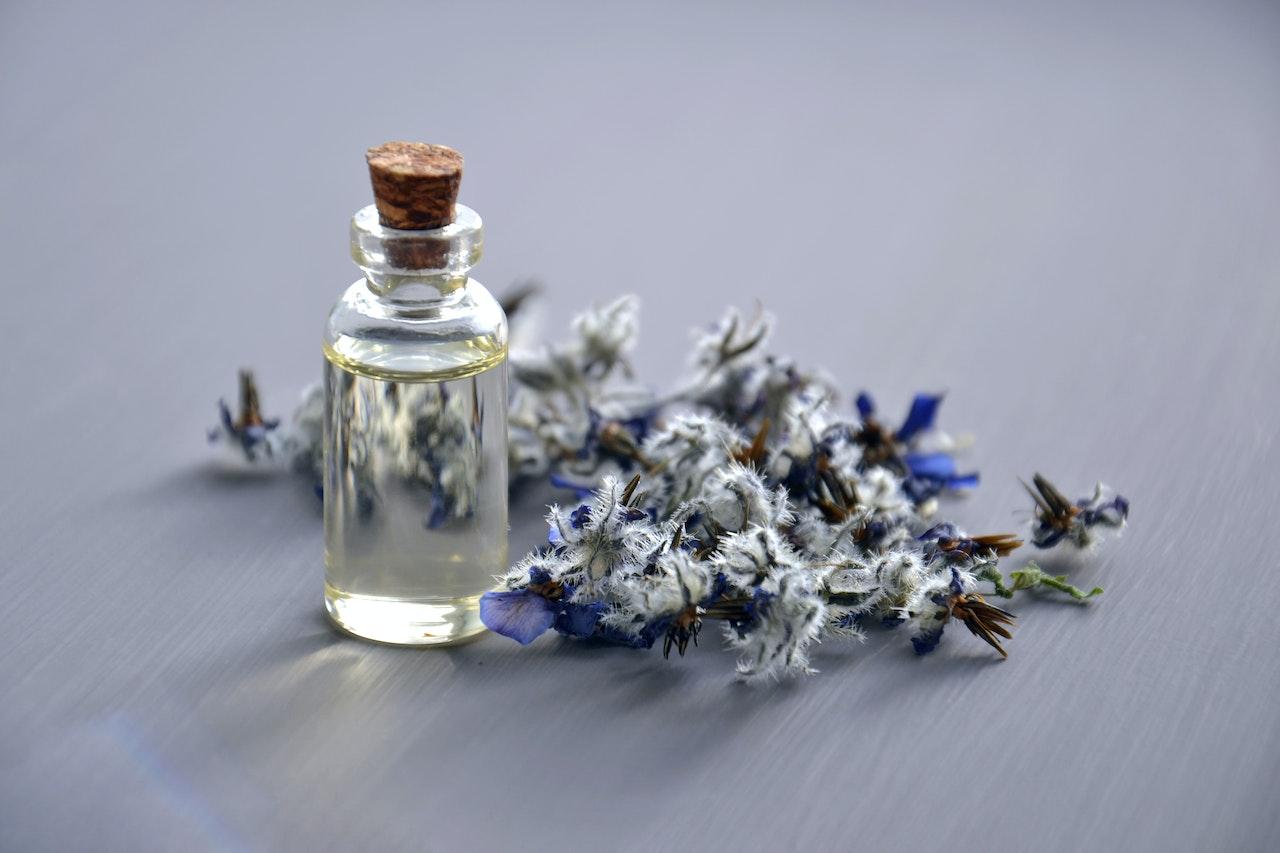
Credit: Pexels
Here are some ideas on how to use lavender oil:
- Add a few drops of lavender oil to your diffuser to enjoy the calming and relaxing benefits of lavender.
- Mix a few drops of lavender oil with some carrier oil and use it as a massage oil.
- Add a few drops of lavender oil to your bathtub for a relaxing and stress-relieving bath.
- Make a lavender-infused pillow spray by adding a few drops of lavender oil to a small spray bottle filled with water. Spray it on your pillow before going to bed for a restful night’s sleep.
- Add a few drops of lavender oil to your laundry load to enjoy the fresh, clean scent of lavender.
Expert Ideas
- Lavender prefers a sunny spot, so make sure to plant it in an area that gets plenty of sunlight.
- Water the plant when the soil feels dry to the touch. Water them regularly but don’t overdo it. Too much water can be harmful to lavender.
- When it comes to fertilizer, less is more. A light application of water-soluble fertilizer every few weeks is all that’s needed.
- Trim the plant back if it gets too leggy.
- Repot the plant every year or two into a slightly larger pot.
Bonus Tip
To care for lavender plants in pots, water the plant regularly and fertilize it every few weeks. Also, be sure to prune the plants back regularly to keep them from getting too big.
Frequently Asked Questions
Q: How often should I water my lavender plants?
A: Lavender plants like to be kept moist but not wet, so you should only water them when the soil is dry to the touch. Over-watering can lead to root rot, so be sure to err on the side of too little water rather than too much.
Q: What type of potting mix should I use for my lavender plants?
A: A well-draining potting mix is essential for lavender plants. You can either purchase a pre-made potting mix specifically for cacti and succulents, or you can make your own by mixing equal parts of sand, perlite, and potting soil.
Q: How much sun do lavender plants need?
A: Lavender plants love full sunlight and will do their best in an area that receives at least 6 hours of direct sunlight each day. If you live in a hot climate, some afternoon shade may be necessary to prevent the plants from getting too much sun and becoming stressed.
Q: What is the best way to fertilize lavender plants?
A: A slow-release fertilizer designed for cacti and succulents is a good option for lavender plants. You can also use a liquid fertilizer every few weeks during the growing season.
Be sure to follow the directions on the fertilizer packaging as too much fertilizer can burn the roots of the plants.
Q: What are the best conditions for storing lavender plants over winter?
A: Lavender plants are not frost-tolerant and will need to be brought indoors or stored in a cool, dry place over the winter. If you are bringing the plants indoors, place them in a sunny spot near a window. Keep them in a cool (50-60 degrees Fahrenheit), dark, and dry location.
Do you have any questions about caring for lavender plants in pots that we didn’t answer here? Feel free to ask in the comments below and we’ll be happy to help!
Conclusion
If you’re looking for a plant that is both beautiful and fragrant, then look no further than the lavender plant. Lavender is a popular choice for both indoor and outdoor gardens and with good reason. Not only does it have a lovely appearance, but it’s also easy to care for and is the best choice for beginners.
Michelle Wilde
Related posts
![]()
About Michelle Wilde
Michelle Wilde is a stay-at-home mom and avid plant lover. Armed with a post-graduate degree in Computer Science (no kidding!), she loves researching plants and landscapes. When she is not caring for her 4 kids, she spends time on her passion for plants. She blogs at www.indoorplantschannel.com, the trusted source for indoor plants.
Learn more
Subscribe
* You will receive the latest posts and updates about indoor plants!
Search
Recent Posts
Categories
- FAQ (218)
- General (1)
- How-To Guides (220)
- Indoor Plants (220)
